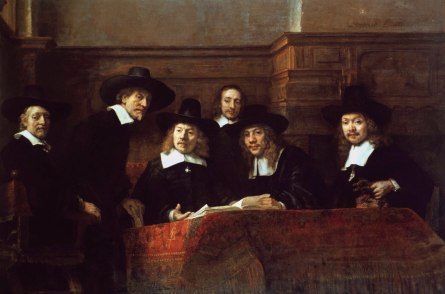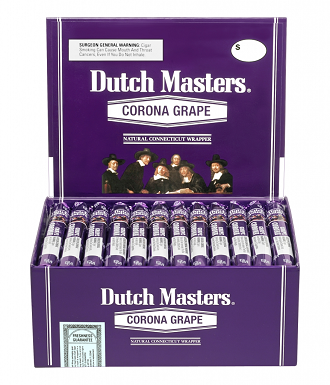Etymology is the study of the origins of words and the ways in which their usage and meanings have changed over time. Today’s examination is of the ‘dutch’. As you can see from apostrophes I don’t mean people or stuff from the Netherlands.
In my neck of the woods a ‘dutch’ (henceforth referred to as a dutch, sans apostrophes) is a marijuana cigarette wrapped in the outer wrapper of a machine made cigar known as Dutch Masters (meant to be from the Netherlands in this case). These cigars come individually wrapped in foil packages and in order to separate the wrapper from the rest of the cigar the outer leaf is cracked and the chopped tobacco contents are discarded, replaced with weed, and re-rolled.
This practice is so prevalent that even dutches made from other kinds of inexpensive machine made cigars such as Game, White Owl, or Phillies are referred to as a dutch. The resulting pile of spare chopped (and often flavored) tobacco is known as dutch guts. Those wandering the streets of my fair city can find piles of dutch guts at bus stops, street corners, and in parking lots where dutch aficionados congregate.
Photos.com proudly presents the work of Jack Robinson
Let’s get some of the technicalities out of the way. The proper noun Dutch refers to people or products of the Netherlands, a small country with a medium to high population density in Western Europe. To the East is the country of Germany and Belgium lies on the country’s Southern border. The name of the country translates literally as ‘the low country’, a name that reflects the fact that only about 50% of the land in that area is over a meter above sea level. In addition to the land that the Kingdom of Netherlands counts as it’s territory in Western Europe the country also owns three Caribbean islands as territorial holdings.
The term ‘Dutch Masters’ refers to a number of Dutch painters who worked within the Dutch Golden Age which spanned between the years 1605 and 1680, the most notable of which are Rembrandt, Vermeer, and Frans Hals. Their paintings are hailed as “simpler and more realistic versions of the European Baroque Period”. The likeness of Rembrandt’s The Syndics of the Drapers’ Guild produced in 1662 also adorns what has become one of the most ubiquitous and profitable cigar brand in the United States.

Here ‘Dutch Masters’ is a proper noun that describes a group of historical figures. The cigar company of the same name is also, of course, a proper noun the spelling or capitalization of which is undisputed.
The Dutch Masters brand of cigars was originally introduced into the United States in 1911 by the G.H. Johnson Cigar Co. and later produced in 1921 under the Consolidated Cigar Corporation. For 78 years the Dutch Masters brand of cigars enjoyed wide consumption under the Consolidated Cigar Corporation until 1999 when that organization became part of the tobacco conglomerate Altadis.
The etymological points of interest emerge when the cigars began to be notoriously used in the early 1990’s as a source for natural wrappers for marijuana blunts. The plural form of the word ‘dutch’ is ‘dutches’, something that has translated from the world of stuffy Dutch Golden Age painters to the world of machine rolled cigars and smokey cramped apartments.
Stunning framed photography, from the world’s leading image company – Photos.com by Getty Images.
The main point of interest comes from the question should a blunt rolled with the wrapper of a Dutch Master be capitalized as a proper noun or is it just a normal regular old noun?
Dutch Masters brand cigars are a finished product that are sold and marketed under the trademark ‘Dutch Masters’ making the complete product a proper noun. The blunt from which the wrapper of a Dutch Master cigar is not a product of the Altadis manufacturing line. Additionally, the term ‘dutch’ applies to similar products made from different finished cigar products.

A dutch is a blunt. A blunt is a marijuana cigarette that is wrapped not with paper but with a tobacco leaf. There is a brand of blunt wraps called Blunt Wraps. The term blunt predated the branded product so it stands to reason that a blunt is not a ‘Blunt’.
My case is as follows: even though the term ‘Dutch’ predated the ‘dutch’ blunt the term ‘dutch’ should not be capitalized. It has become a colloquial term for a blunt that is the product of the process wherein a machine made cigar (Dutch Master or otherwise) is is cracked, gutted, and re-rolled into a blunt. Therefore, regardless of the affiliation that Dutch Master brand cigars may have had on the original process the term has now become a blanket for what is a specific type of blunt.
Who knew a topic such as recreational drug use could be turned into such a dry and uninteresting study. Until next time friends, may your dutches never be dry.
Benjamin Sweeney is this site’s administrator and our main contributor.
